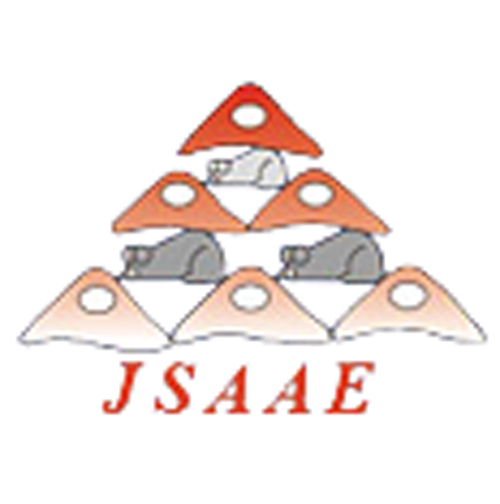Quantitative Prediction of ln Vivo Drug-drug Interactions from ln Vitro Data: Effects of Active Transport of Inhibitors into the Liver
Shin-ichi Kanamitsu1, Yutaka Shinozaki2, Kiyomi Ito3, Takafumi Iwatsubo4, Hiroshi Suzuki and Yuichi Sugiyama
Graduate School of Pharmaceutical Sciences, University of Tokyo, 7-3-1, Hongo, Bunkyo-ku, Tokyo 113-0033, Japan.
1Current address: Section of Drug Metabolism Research, Naruto Research Institute, Otsuka Pharmaceutical Factory, Inc.
2Current address: Central Research Laboratories, Zeria Phannaceutical Co., Ltd.
3Current address: School of Pharmaceutical Sciences, Kitasato University
4Current address: Drug Metabolism Laboratories, Institute for Drug Development Research, Yamanouchi Pharmaceutical Co., Ltd.
Correspondence:Yuichi Sugiyama,Graduate School of Pharmaceutical Sciences, University of Tokyo,7-3-1 Hongo,Bunkyo-ku,Tokyo l13-0033,Japan.
Tel:+81-3-5689-9094 Fax:+81-3-5800-6949
E-mail:sugiyama@seizai.f.u-tokyo.ac.jp
Original paper :AATEX 7(1):23-29,2000
Abstract
The degree of in vivo drug-drug interactions caused by competitive or non- competitive inhibition of drug metabolism can be predicted using the in vitro inhibition constant (Ki) and the unbound concentration of inhibitor in the liver (Iu). Although it can be assumed for most inhibitors that the value of Iu is equal to the unbound concentration in the liver capillary (sinusoid) (Iout,u), Iu is larger than Iout,u if the inhibitor is actively taken up by the liver. In the present study, the possibility of active transport of inhibitors into the liver was evaluated using isolated rat hepatocytes. An uptake study using FCCP, an 4TP-depletor, showed that unbound quinidine, erythromycin, sulfaphenazole, ketoconazole, and omeprazole are concentrated 2.2-, 1.4-, 1.2-, 1.2-, and 1.0- fold. respectively, in hepatocytes due to active transport. This value of the unbound concentration ratio of each inhibitor was multiplied by the unbound concentration at the inlet to the liver (Iin,u) to estimate the maximum value of Iu, and the in vivo increase in the AUC of the corresponding substrates(sparteine, cyclosporine, tolbutamide, terfenadine, and diazepam, respectively) was predicted based on the Iu/Ki ratio. Because none of the investigated inhibitors was found to be highly concentrated in the liver, the predicted in vivo interaction was not greatly affected by taking account of active transport of the inhibitor.
Keywords: drug interaction, active transport, isolated rat hepatocyte
Low-molecular Peptide Model of Protein Denaturation by UVA Irradiation and the Effect of Antioxidants
Takao Ashikaga1,3, Akira Motoyama2, Hideyuki Ichikawa1, Hiroshi Itagaki 3 and Yoshihisa Sato1
1Institute For Advanced Skin Research Inc.,
2Shiseido Pharmaceutical Research Center,
3Shiseido Life science Research Center, Yokohama, Japan
Correspondence: Takao Ashikaga
Shiseido Life Science Research Center, 2-12-1 Fukuura, Kanazawa-ku, Yokohama 236-8643 Japan.
Fax: 045-788-7309;
e-mail: takao.ashikaga@to.shiseido.co.jp
Original paper :AATEX 7(1):30-36,2000
Abstract
As a simple model of ultraviolet (UV)-induced protein denaturation, Amyloid P hexapeptide (APH, Phe-Thr-Leu-Cys-Phe-Arg) was exposed to UVA irradiation. A new product was isolated by HPLC and identified by fast atom bombardment mass spectrometry (FAB-MS) as the disulfide dimer. Thus, UVA induced disulfide bond formation. We also examined the effect of replacing the Cys residue of APH with other amino acid residues (methionine, tryptophan, tyrosine and histidine) that might be susceptible to oxidative damage. In the case of [Trp4]-APH, the amount of the analog was decresed at 40 J/cm2 or higher. When APH and [Trp4]-APH were mixed and UVA-irradiated, the combination afforded a greater number of products than the sum of those obtained when they were separately irradiated. That finding suggests that denaturation of proteins by UVA may involve very complex reactions of plural kinds of amino acid residues. Since the UV-induced APH dimer formation could be easily evaluated by HPLC, we used this system to examine the effect of antioxidants on the UVA-induced reaction. The dimer formation was greatly inhibited by dithiothreitol and N-acetylcysteine, but was promoted by azide and catechin. This system might be useful for evaluating the ability of drugs to prevent oxidative damage to proteins caused by UVA irradiation.
Keywords: protein denaturation, disulfide bond, oxidative damage, peptide model
S-Conjugate-dependent Toxicity: Alternatives to Animal Studies
M. W. Anders
Department of Pharmacology and Physiology, University of Rochester Medical Center,
601 Elmwood Avenue, Box 711, Rochester, New York 14642, U.S.A.
Correspondence: Professor M. W. Anders
Department of Pharmacology and Physiology, University of Rochester Medical Center,
601 Elmwood Avenue, Box 711, Rochester, New York 14642, U.S.A.
telephone: 716-275-1681; fax: 716-244-9283;
e-mail: mw_anders@urmc.rochester.edu
Presented at the 13th Annual Meeting of the Japanese Society for Alternatives to Animal Experiments. 13-14 November 1999, Tokyo, Japan.
Special ArticleAATEX 7(1):37-46,2000
Abstract
Studies on the mechanisms of glutathione S-conjugate-dependent toxicity are a major focus of the research in our laboratory. These studies aim to elucidate the mechanism of the selective nephrotoxicity of a range of halogenated olefins or haloalkenes that undergo conversion to toxic metabolites by the cysteine conjugate b-lyase pathway. The b-lyase pathway is a multiorgan, multistep pathway that involves glutathione transferase-catalyzed glutathione S-conjugate formation in the liver, enzyme-catalyzed hydrolysis of the glutathione S-conjugates to the corresponding cysteine S-conjugates, active uptake of the S-conjugates by the kidney, and bioactivation by renal cysteine conjugate b-lyase. Although animal experiments are conducted to determine the nephrotoxicity of haloalkenes, a range of alternatives to the use of intact animals has also been employed in these studies. These alternatives include studies with purified and expressed enzymes, isolated rat and human hepatocytes, isolated rat renal proximal tubular cells, tissue culture, chemical models, Fourier-transform ion cyclotron resonance mass spectrometry, and computational chemistry. The use of the alternatives has allowed a reduction in the number of animals used and, in some cases, replacement of animals with in vitro models.

